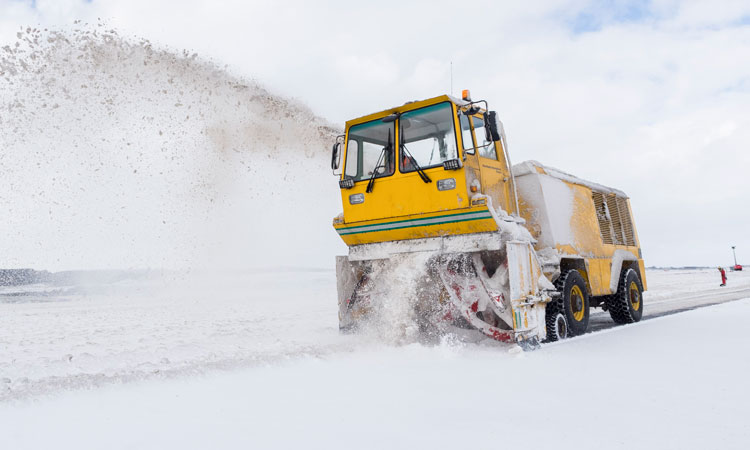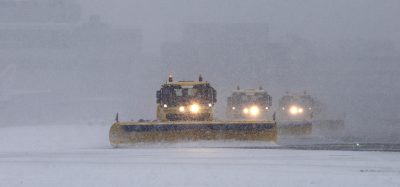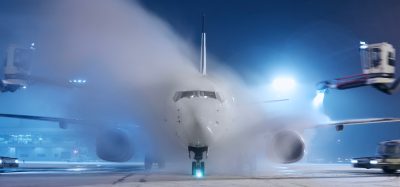Keeping the gateway to Scotland’s North East open and operational
- Like
- Digg
- Del
- Tumblr
- VKontakte
- Buffer
- Love This
- Odnoklassniki
- Meneame
- Blogger
- Amazon
- Yahoo Mail
- Gmail
- AOL
- Newsvine
- HackerNews
- Evernote
- MySpace
- Mail.ru
- Viadeo
- Line
- Comments
- Yummly
- SMS
- Viber
- Telegram
- Subscribe
- Skype
- Facebook Messenger
- Kakao
- LiveJournal
- Yammer
- Edgar
- Fintel
- Mix
- Instapaper
- Copy Link
Posted: 21 May 2021 | Mark Beveridge | No comments yet
Aberdeen International Airport receives its fair share of cold winter weather. Despite battling with the COVID-19 pandemic, where many airports have been forced to closed, Aberdeen provides a crucial link to the region and worked hard to remain open and operational. International Airport Review spoke with Mark Beveridge, Operations Director at Aberdeen Airport, to see how the airport approaches its winter operations.


Aberdeen International Airport (ABZ) is unique in that it is comprised of one fixed wing and four helicopter terminals. It has a long-standing history in the North East of Scotland, providing services to business and commercial passengers, particularly for those in the energy sector, given its prime location just north-west of Aberdeen City Centre.
The airport has overcome many challenges in its proud history, but nothing quite like the unprecedented encounter of COVID-19 and the worldwide pandemic. This pandemic has had a significantly detrimental impact on not only Aberdeen Airport, but the entire aviation sector across the UK. Airports have been operating at a fraction of their capacities and the sector’s recovery has been forecasted years into the future. Whilst many businesses across Scotland and the rest of the United Kingdom (UK) were forced to close due to the pandemic, Aberdeen Airport remained open.
Throughout 2020, we were open: To support crucial lifeline services to communities in the Highlands and islands; for air ambulance flights; to enable the distribution of much needed medical supplies; and to serve the oil and gas sector. The success of the region and airport are intertwined, and there is a heavy focus on providing the connectivity on which Aberdeen’s internationally-focused economy is so dependent. If Aberdeen Airport had closed, the economy would have really struggled to continue to flow in the North East. This meant that, at times throughout the pandemic, we were the busiest airport in the UK in terms of air traffic movements.
Delivering a winter maintenance plan during a pandemic
Since taking up the role of Operations Director at Aberdeen International Airport in November 2020, I have been working alongside our many business partners as we set out a strategic recovery plan from what has been the biggest downturn ever experienced in the aviation industry. A series of health measures were also introduced to provide a safe environment for staff and passengers. This included enhancing an already thorough cleaning regime and helping staff and passengers observe physical distancing. However, one thing that has not changed is our dedicated team’s ability to deal with major weather events, like snow and ice, in our corner of the North East of Scotland. Our open airport ensured that the lights were kept on throughout the country and our winter maintenance plan was prepared and ready to be implemented. Throughout the winter months, between November and March, snow and ice make a regular appearance at Aberdeen Airport, but we are equipped and prepared to make sure that it doesn’t impact our operations.
Our fleet of snow ploughs, de-icers and sweepers are readily available to combat the weather when snow falls across the North East of Scotland. Our heavy-duty machinery keeps our runways and taxiways clear of snow and ice to allow our fixed wing and helicopter flights to land and take off safely from our airport.
We have a dedicated, trained and well-equipped team prepared for the variety of weather conditions that we experience here in Aberdeen. Our airside operations and engineering team work to keep our airfield, aprons and supporting areas ready for aircraft and passengers.
The terminal team also assist and are on hand to help to provide details on the rebooking of flights during any major disruption. They will also do what they can to help passengers who may also need emergency supplies, like baby milk or food.
Investment into airport vehicles
Already in 2021, our team have been put into action as snow and ice accumulated on the runways. But, as always, the airside operations team kept the airfield safe and operational in a timely manner.
Part of the timely turnaround is due to the investment made into the airport’s fleet of vehicles back in 2013. The £1.3 million upgrade included modernising and optimising the snow fleet, demonstrating to our business partners the airport’s readiness and commitment to ensuring operations can continue in times of dramatic weather.
Interestingly, part of the investment in 2013 was an enormous, state-of-the-art £700,000 fire engine, which starred in the Transformers movie, and electric and hybrid vehicles to support the airport’s sustainability commitments.
The vehicles, including snow ploughs and sweeper units, help to ensure the readiness of the airfield even when the elements are against us. Steel wire brushes, attached to the middle of the sweeper unit, rotate at high speeds, clearing snow from the 1,953m long runway, before being blown off the tarmac by a blower unit located at the rear of the vehicle.
A snow cutter is then used to reduce the snowbanks created by the sweeper units. The full snowbank is then blown into the grassy area before de-icers give the tarmac its finishing touches, bringing the pavement conditions back to blacktop. Reaching speeds of up to 24mph, it takes a convoy of winter operation equipment less than 30 minutes to completely clear the 1,953m long, 46m wide runway and get the airport back in full operation.
Our team is very proud of their work, and rightly so. Should snow and ice appear overnight, the team will begin at around 3am to start operations.
The ‘Beast from the East’ was no match for Aberdeen
Winter can be notoriously hard on airports, but, historically, Aberdeen has fared well in the worst of conditions. In February 2018, the weather event dubbed as the ‘Beast from the East’ affected the whole of the UK, with Aberdeen being no different. It led to more than 100 schools needing to be closed, 27,000 homes left without power and travel disruption across the road network. However, our team had the determination and expertise to ensure that our airport remained operational throughout, with only a limited number of cancellations during one of the worst winter events experienced by the UK. Our staff did a tremendous job in keeping the airport open and providing passengers with timely updates throughout. Our snow ploughs and cutters proved an invaluable investment.
Positioning the city as a destination
The COVID-19 pandemic has not affected our airside operations and the team’s ability to carry out their duties to a very high standard, and we are confident in our future winter maintenance plans. Before COVID-19, our snow teams were already regarded as one of the best across the UK, and we aim to continue that. For both the region and the airport, the recovery from the pandemic will be a gradual process, with predictions showing that it could be more than three years before we return to 2019 levels of aviation. However, Aberdeen International Airport was ready, with the finishing of its ambitious £20 million terminal transformation project in 2019, the largest development in the airport’s history. This doubled the size of the terminal, saw new retail and catering outlets introduced and two brand new lounges for our passengers to enjoy.
Before lockdown and the pandemic, there had been an anticipation of growth throughout the region. The city had positioned itself as a destination for culture and the arts with the Nuart and Spectra festivals. Additionally, £300 million was invested in a new state-of-the-art arena called P&J Live, which, in 2019, hosted events including the BBC Sport’s Personality of the Year and SPE Offshore Europe, bringing thousands of people to the city via the airport.
The construction of a new harbour is also well underway, giving great potential to bring more people to the area, with cruise ships starting and finishing in the city.
Looking to the future
In the long-term, post-COVID-19 pandemic, the North East of Scotland and Aberdeen will have a heavy focus in retaining and enhancing the connectivity needed for the region, as well as growing back with sustainability underlying all of our future operations and ensuring that our commitment to Net Zero by 2045 is achieved. It will be a slow, gradual recovery at the airport, but what will not change is the role of aviation in driving the economy. It is crucial that we provide the connectivity, which will ensure growth, employment and prosperity. What also will not change is our team’s ability to keep the airfield and airport open and operational during snow events.



















